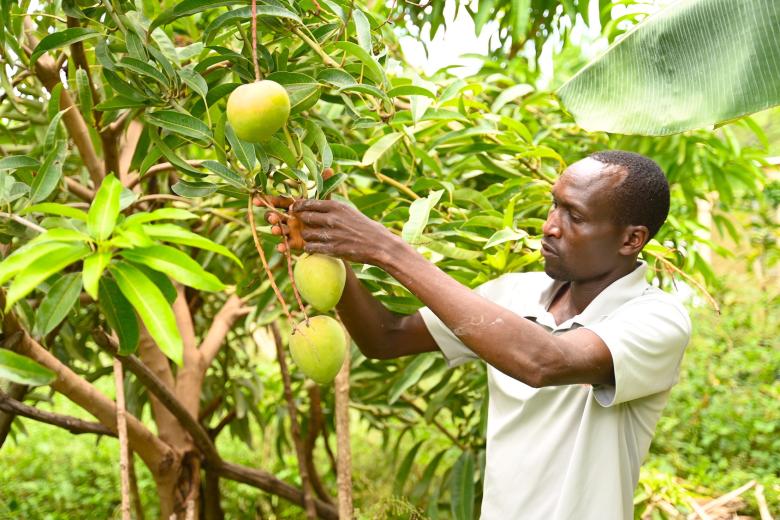
Trees offer sustainable livelihoods for families in Elgeyo Marakwet, Kenya
June 20, 2023
By Hellen Owuor, Communications Officer (CRIFSUP), World Vision Kenya
At Kapterit village in Elgeyo Marakwet County, resides Reuben, a 33-year-old farmer, with his wife Anita and their five-month-old baby.
Having relocated to the village in 2019, Reuben initially cleared the farm of indigenous trees, intending to replace them with exotic ones.
“However, this led to the land becoming bare, causing increased wind erosion and rapid soil drying, which destroyed my crops and mango trees. Additionally, fetching water for irrigation became costly. That was until I discovered the technique of restoring indigenous trees through World Vision,” Reuben explains.
In May 2022, he was among 1,000 lead farmers who received training on the Farmer Managed Natural Regeneration (FMNR) approach under World Vision’s Central Rift Farmer Managed Natural Regeneration Scale Up Project (CRIFSUP) that is funded by the Australian Government, through the Department of Foreign Affairs and Trade (DFAT).
He later imparted the knowledge to his wife Anita and embarked on embracing the FMNR approach in their home, so as to increase tree cover in their land.
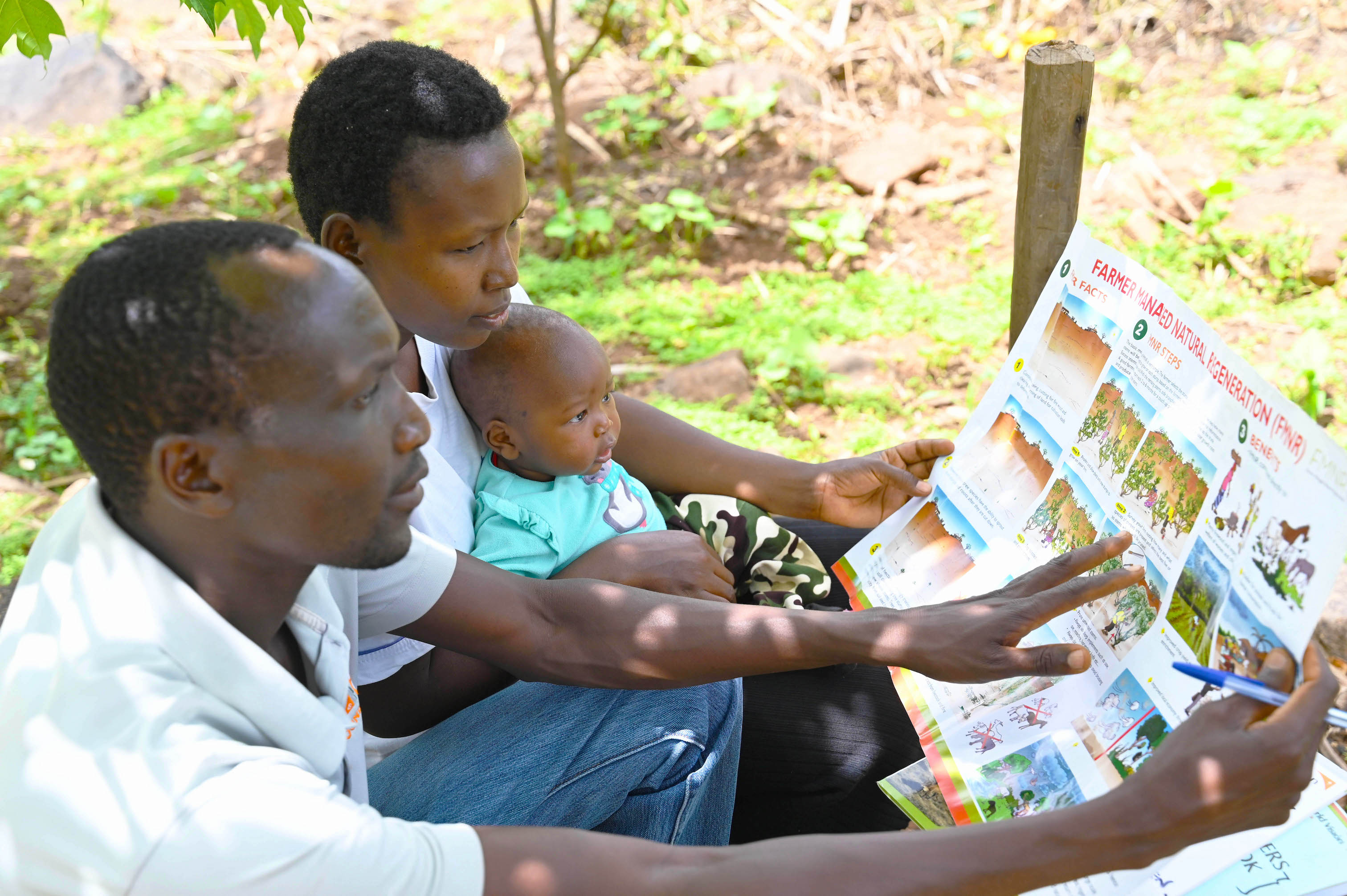
Reuben trained his wife, Anita, on the FMNR approach and now they support each other in managing trees in the farm. ©World Vision Photo/Hellen Owuor.
“After the training, I realised my mistake of clearing the land and recognised the numerous benefits of indigenous trees. Even during droughts, they remain resilient. Utilising the skills gained, I fenced my farm, identified tree stumps of indigenous trees to be regenerated and adopted proper pruning techniques,” he shares.
Reuben had prior knowledge of tree pruning but had been doing it incorrectly.
He explains, “I used to prune from the upper side of the branch, downwards. Additionally, I would dispose or burn the pruned branches. Thanks to World Vision, I have gained enlightenment through the FMNR training. Sometimes we think we know, but we don’t.”
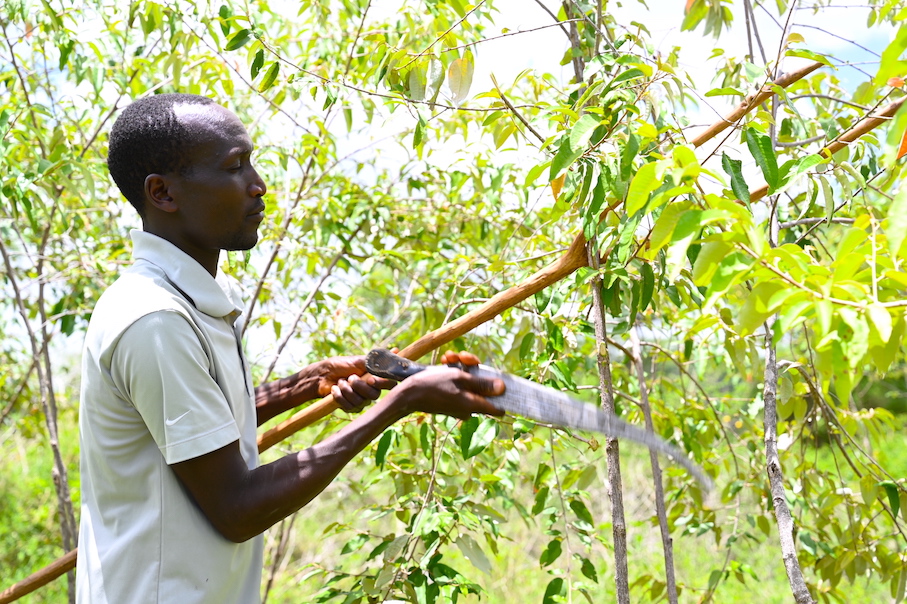
When pruning, one is required to use a sharp tool. Reuben prefers to prune when the rainy season is approaching. He says trees in the farm have reduced soil erosion and built their resilience to climate change. ©2023World Vision Photo/Hellen Owuor.
Pruning downwards can harm the tree and hinder the regrowth of the pruned branches. The correct practice involves making an upward cut from underneath the branch. This aids faster tree recovery while reducing vulnerability to disease and insect damage at the cut area.
“I derive many benefits from pruning these trees. The pruned parts decay and enrich the soil with humus, thus improving fertility. They also serve as mulch, which retains soil moisture for my crops and prevents them from drying. Moreover, the trees provide fodder, shade and firewood,” he highlights.
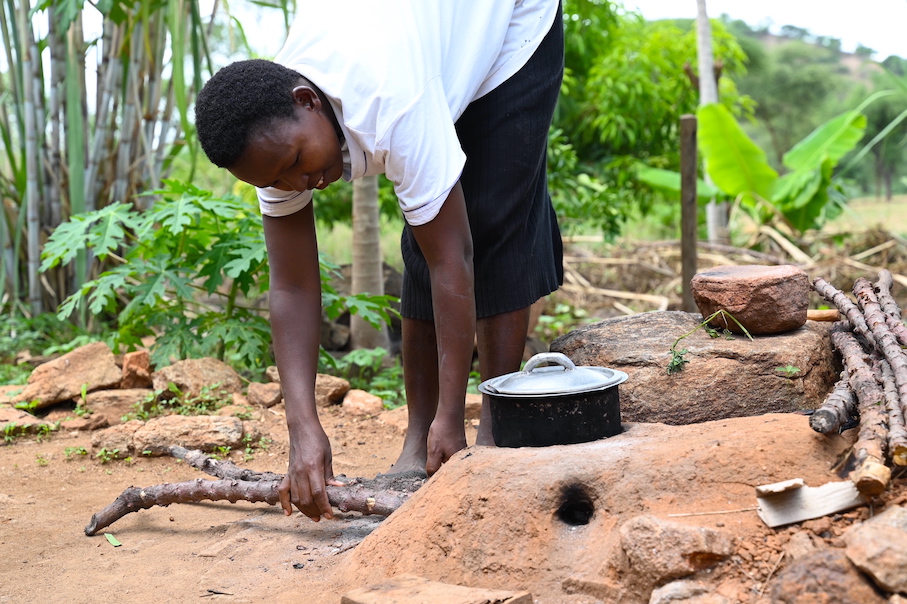
Anita now has firewood readily available in their homestead. ©World Vision Photo/Hellen Owuor.
Anita, Reuben’s wife, no longer needs to trek approximately four kilometres to collect firewood.
“The increased tree cover in our compound, resulting from FMNR, has made firewood readily available. I now have spare time for other tasks within the homestead,” she says.
Read more here
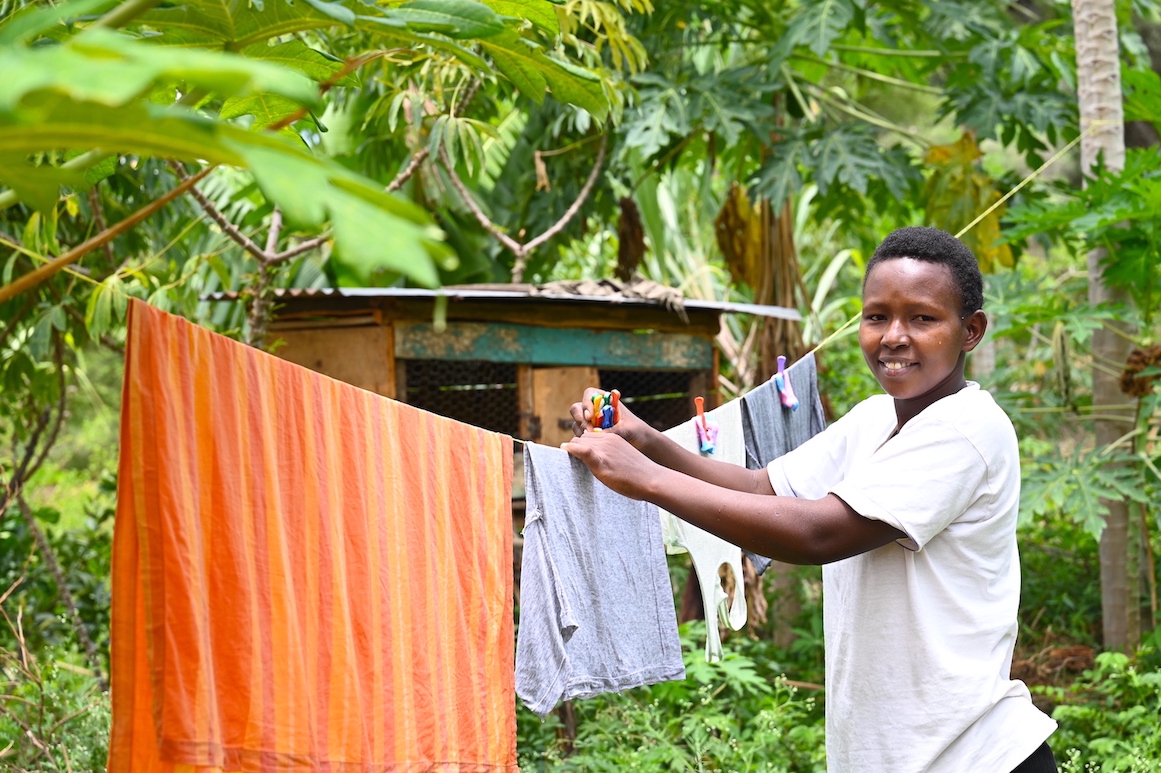
Previously, Anita used to walk for about three hours in search of firewood. Now, she has spare time to care for her family and perform other household tasks. ©World Vision Photo/Hellen Owuor.
